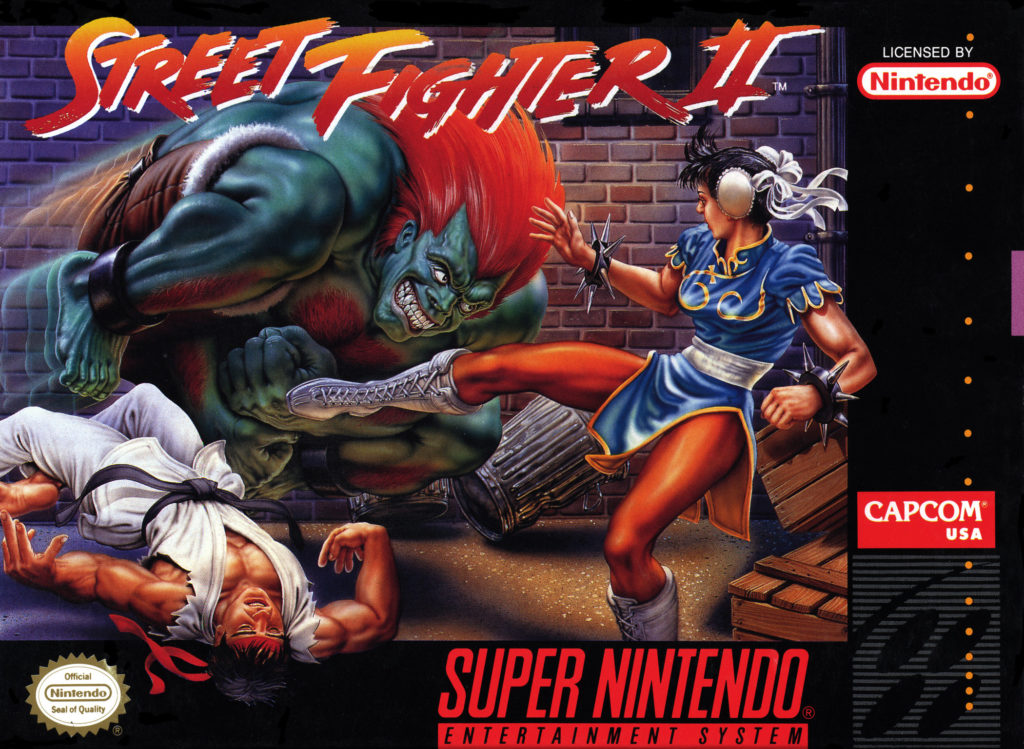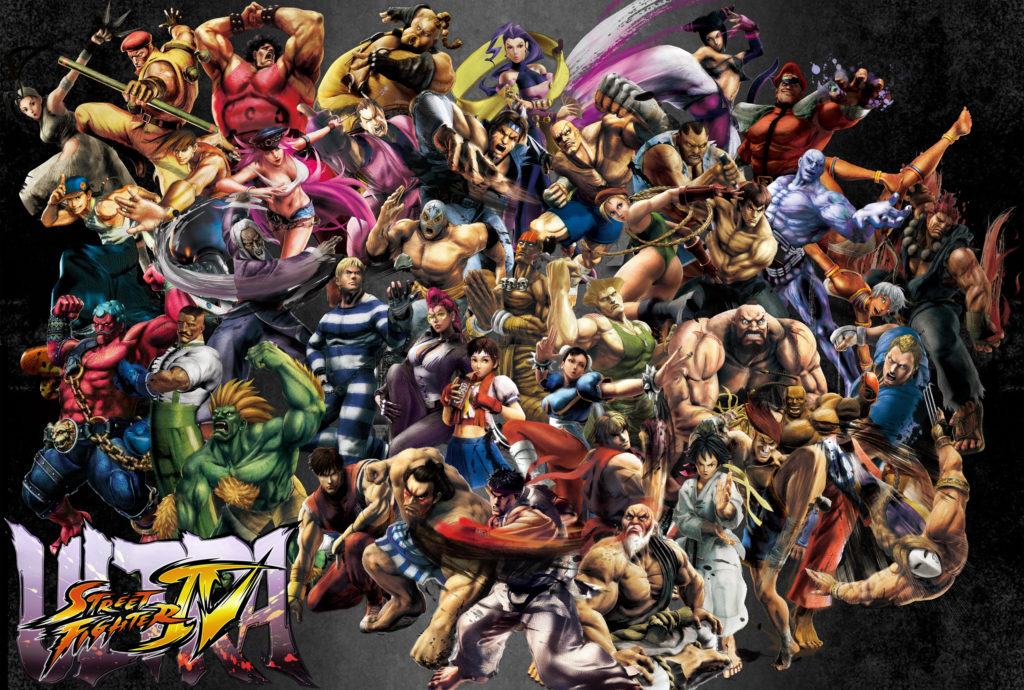Re-Release Rampage - How Capcom Took It Too Far
Originally published September 2017Welcome back to our multi-part rambling series about video games and how their propensity for ongoing improvements has changed the industry and the meaning of the word, "finished." Last time, I briefly went over the meaning of a release date in video games and how the meaning of a finished game has always been a little loose. Today, I want to talk about a game genre and the company at the forefront of that genre that further exacerbated the loose interpretation of the word "finished."
Most other games during the earlier generations were considered "done" when they were released. There was one genre, however, that went against the grain. Fighting games made use and made sense of the concept that updating and revisiting releases was a good idea. Sometimes, though, it went too far.
Rebel in the Streets
Fighting games were the main genre that took advantage of post-release updates from the developer. Capcom set the precedent with their Street Fighter franchise, and many other developers followed their example. While other games of different genres, like Mega Man and Castlevania, were perfectly acceptable as finished products when they were originally released, it was a different story for fighting games. Early on, fighting games were constantly evolving due to the community surrounding them. They were games that required skill to play against one another, and their competitive nature made the path to victory less static.
Image: Capcom
Players were learning different ways to combat each other within the restrictions of the game. Since players were competing with one another in arcades, pouring quarters into the machines to fight and rematch one another, it was important to make sure that players kept coming back for more. If too many people thought the game was unfair or that certain characters had unfair advantages, you wouldn't be able to keep them playing. Or, if certain experienced players got too good with certain characters, it would be difficult for new players to get into the game.
Thus, it made sense for developers to update their fighting games. These updates would add new characters or rebalance the old roster for players. Since this was before the days of the internet, a game's update couldn't just be patched into the original game. Instead, this was typically handled by releasing a new version of the game with these updates. For example, Street Fighter II came out with Turbo, Super Turbo, and Championship editions (among others) that included new characters, new special moves, and new character speeds. Likewise, Mortal Kombat 3 saw multiple versions with similar updates in arcades and home consoles as well. Whether in the arcade or at home, the updates worked in getting people talking about the games again.
Image: Capcom
Capcom was definitely at the forefront when it came to updating their franchises. They got to try the incremental method with Street Fighter, and they flooded the market with sequels to Mega Man. While they may have been making sequels with Mega Man that required new art assets and mechanics, the engine and core game could stay mostly the same. This allowed for shorter development cycles and some saved money. The incremental updates with Street Fighter were quite similar. The engine would remain the same, along with the core mechanics, just some new assets and mechanical changes would be thrown in with the new subtitle. In both cases, it allowed Capcom to release a very familiar game for full price and get everyone talking about their old game again.
A Turning Point
The way in which Capcom was incrementally improving their games throughout the ‘90s was mostly acceptable at the time—I didn't care for the endless revisits of Street Fighter II, personally. However, that method of updating a game eventually wore out its welcome, and people wanted something more efficient. You were essentially paying for the same game all over again with some small new features. It was like buying a new version of the same car each year just for the small upgrades to the dashboard. There might be some improvements to the stereo system, or it might be a color you like, but the engine and performance would be mostly the same. If you knew someone who was buying cars like this, you'd probably assume they were fine, just throwing money away. This release cycle is part of the reason people criticize the Madden football series by EA. Each year, it's just roster updates for a full-price release; only occasionally will they update the actual engine of the game and make it more interesting and different.
I was never into Madden, myself, but I have always been into fighting games. So I have my own experience of getting burned by Capcom's methods of re-releases and updates. When I was finally able to get a job and afford to buy my own video games, fighting games had started to make a "comeback" with Capcom's success of Street Fighter IV (SFIV) and Marvel vs Capcom 3 (MVC3)—I never thought they left, but that's a different subject for me to ramble about. Everyone was suddenly into fighting games again because Street Fighter was back and available on XBOX 360 and PS3. Even I decided to pick up the game when it launched, despite never being the biggest fan of Street Fighter. It was fun, and I enjoyed my time with it. When Capcom announced Marvel vs Capcom 3, I was excited to see how they would revitalize yet another franchise that had been dormant for years. When that game finally came out, I had a lot of fun with it, even though I didn't entirely understand it.
Image: Capcom
Where does this start to go sour? Well, if you recall, by the time Street Fighter IV was replaced by Street Fighter V, there were several updates and title changes to IV. A year after the initial console release of Street Fighter IV, Capcom released Super Street Fighter IV, which boasted a roster that had doubled in size and new mechanics that completely changed the way the game was played. Considering how the game was already taking advantage of DLC by offering alternate costumes for the current characters, it was odd that Capcom had decided to just release a new version of the game that did not take into account all the work and money you had put into the previous game. If you wanted those alternate costumes for your characters, you'd have to buy them again for Super Street Fighter IV, because they didn't carry over. Also, this "update" to the game cost another $40. Nice of them not to sell it at the full price upfront, but it didn't make the pill much easier to swallow.
I wasn't happy about it, but I bought Super Street Fighter IV because I wanted to try out some of the new characters and mechanics. I also wanted to be able to play people online. By making a separate game, Capcom had dissected its player base for SFIV. Players were forced to upgrade to the newest version if they wanted to keep playing with other people, or risk getting left behind on the vanilla version of the game if they didn't buy the update. It was a raw deal that I didn't like much, but I went along with it. Then, Capcom sealed my distaste for them with Marvel vs Capcom 3.
Image: Capcom
While Super Street Fighter IV came out in a short amount of time since the original game, MVC3 had an even shorter time between its original and updated re-release. Yes, they did it again, and they did it within a year. The original Marvel vs Capcom 3 was released in February 2011, and Ultimate Marvel vs Capcom 3 was released in time for Christmas that same year. They had done the same thing where the player base was split up, and the update had included a much larger roster than before. Likewise, the DLC that you might have purchased for the original game did not carry over. But don't worry, the game only costs $40.
I spat the pill back out after that. Development of games of that scale does not take less than a year to complete. If it had come out years later, when people's interest in MVC had diminished a bit, it would have been a different story. It would have felt like a revitalization again, and I would have been happy for the update. However, MVC was still a very hot topic when Capcom announced they were up to their same dirty tricks again. It meant that they had released the original with the intention of making it obsolete within a year to collect as much money as quickly as they could. Had they provided the option of adding these improvements to the game you had already bought, instead of splitting up the player base once again, it would have been more acceptable. I have never played Ultimate Marvel vs Capcom because I was so offended by their blatant greed. In fact, I didn't buy a Capcom game for years.
Image: Capcom | The original Roster of MVC 3
Since then, however, they have changed their tune in how they release their fighting games. While the next Marvel vs Capcom game is off to a rocky start with some sour public opinion towards their marketing, it is likely to follow the same path as Street Fighter V. Street Fighter V was released as a "platform" fighting game. Like No Man's Sky, it had a tumultuous initial release with a lot of ire from fans for being rather bare-bones with its content. Nonetheless, there has been only one "release" of Street Fighter V, and since its release, it has changed a great deal by adding new characters and adjusting the modes and mechanics of the game. They're doing what they did before with SFIV, but without dividing their fans, and without charging an arm and a leg for the updates... somewhat.
It's funny to me that Capcom, a large company with a long history, has recently gone through an experience similar to Hello Games. It's not quite as bad because the core game Capcom originally released was still accepted as fun to play. Also, it's Street Fighter: people's expectations weren't unrealistically high, and they were going to play it no matter what. Still, I find it ironic that Capcom was the pioneer of patches when it came to their games, but as soon as they tried their hand at releasing the game early, it backfired.
Why would you release it early anyway? After what happened with No Man's Sky, who in their right mind would want to give access to an unfinished game? If you're asking these questions, then you haven't been looking at Steam in the past few years. In the next post, I'll discuss the concept of "early access," its successes and its failures, and how it has changed the idea of a release date even more than post-release patches.
Do you know of any other examples of game updates of old that I left out? Any corrections to the information I mentioned? Tell me what you know in the comments!
The previous post in this fast-rambling series can be found here. Click here for the next one!
Read my No Man's Sky Rambling series here:
Fan of death metal? Check out my band on Bandcamp and Soundcloud. If you like what you hear and want to hear more, head to HoundsofInnsmouth.com for more info!




